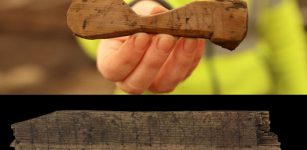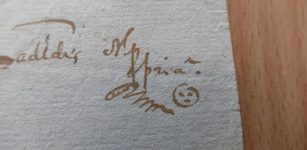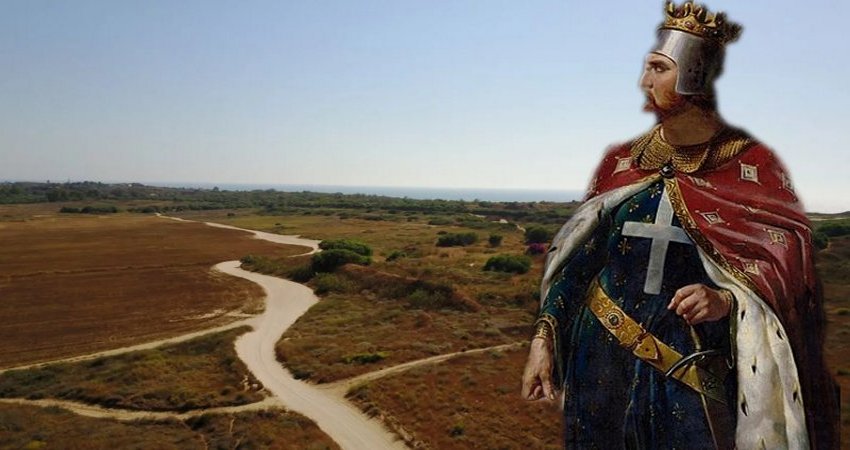‘Candy Paper’-Like Golden Masks Shed Light On Lost Himalayan Civilization
MessageToEagle.com – Squatting by an ancient tomb at an altitude of 4,000 meters in the Ngari region in Tibet, archaeologist Tong Tao noticed a worker pick up something wrinkled and shining from the soil.
“It looked too new for the 1,800-year-old tomb. At first, I thought it was a candy paper blown into the tomb by the wind,” recalls Tong, who leads an archaeological team from the Institute of Archaeology under the Chinese Academy of Social Sciences (CASS).
On a second look, he was surprised — the “candy paper” was a small gold mask.
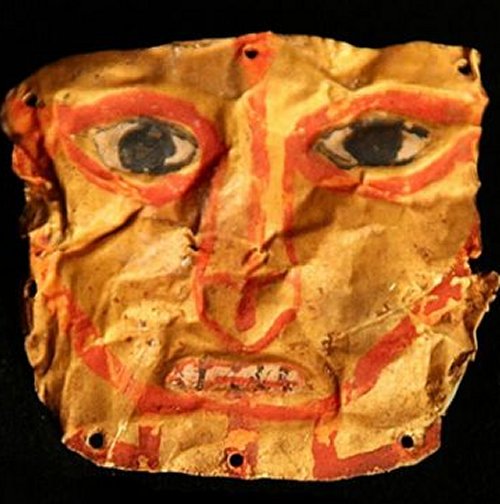
Located in front of the Gurugyam Temple in Gar County, of Tibet’s Ngari region, the tomb is one of the highest archaeological digs in the world. When a passing truck opened a hole in front of the temple in 2006, the monks found some silk, bronze and pottery items. They enshrined them in the temple, believing they were from their ancestors,’ reports Xinhuanet.
Archaeologists came to excavate the tomb in 2012. Flicking off the dust, Tong found the gold mask was a square, 4 cm by 4 cm. The eyes, nose and mouth were drawn on with black and red pigment. Little holes around the mask indicated it was originally stitched on silk.
Lab analysis showed the owner of the tomb was a man aged about 35. However, this was not the only gold mask discovered in the Himalayan region.

A mask as big as a real face and wearing a hat was unearthed from a tomb in Ngari’s Zanda County in 2009. Another was found nearby in 2012, just after Tong Tao’s discovery.
The tomb in Zanda was named the Chuvthag cemetery after a nearby stream.
It dates back about 2,000 years, according to Li Linhui, a researcher at the Institute of Cultural Relics Protection in Tibet.
“The discoveries show the use of gold masks in the Himalayan region was not uncommon,” says Tong.
See also:
Ruins Of The Mysterious Kingdom Of Guge That Suddenly Vanished Overnight
Ancient Tarna Monastery And The Legendary Epic Of King Gesar
Ancient Secrets Hidden In The Piyang Caves – Mysterious Sacred Caves Of Tibet
Records show the Zhangzhung Kingdom ruled the western region of today’s Tibet before it was conquered by the Tubo Kingdom. However, most of the historical documents describing the Zhangzhung Kingdom are exaggerated. Researchers still lack solid evidence about the mysterious ancient civilization.
“It’s quite likely that the owners of the gold masks were the heads or high ranking noblemen of the Zhangzhung Kingdom,” Tong says.
“We are still not clear about the exact purpose of the gold mask, but we think the basic function was to beautify the dead,” Tong says. “The gold mask is key to studying Zhangzhung civilization.”
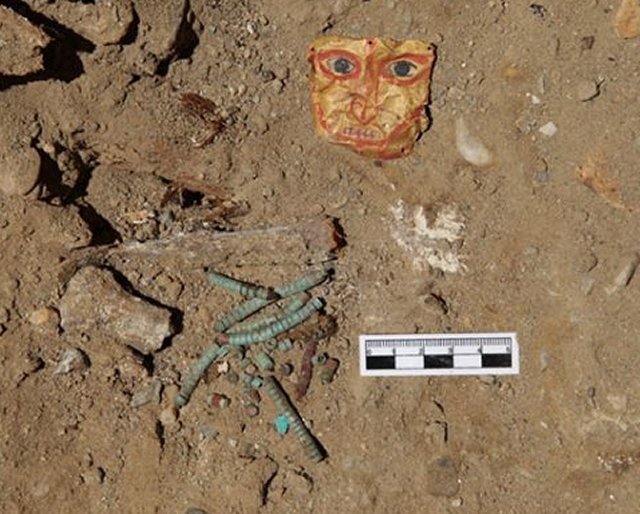
Tong was drawn to the sparsely populated Ngari region after Jin Shubo, a former senior official in Tibet, brought some colorful silk shreds and a photo of a piece of silk carrying Chinese characters meaning “marquis” to the CASS Institute of Archaeology in 2009.
He told the archaeologists how the silks were found in the Gurugyam cemetery. They were the first ancient silks ever unearthed in Tibet.
“At the first sight, we thought the silks were probably up to 2,000 years old. But how did they come to Ngari? No silk had ever been excavated in Tibet before — let alone such ancient silk,” Tong says.
After much research, he recognized the patterns on the silks as being similar to those on the silks excavated in Xinjiang, northwest China. Carbon-14 analysis indicated the silks from Ngari dated from the 2nd to the 3rd centuries.
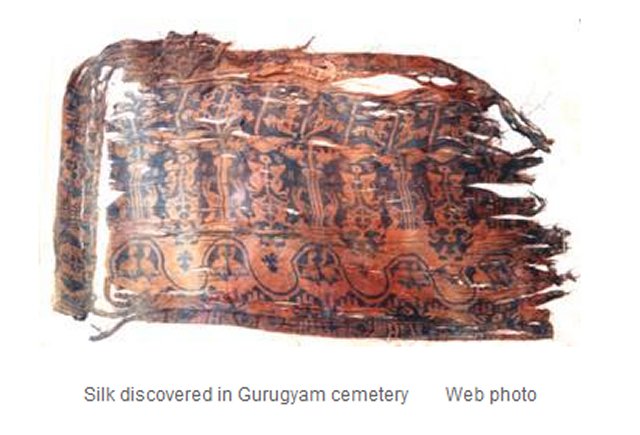
Later, archaeologists excavated many bronze and wooden items in the Gurugyam cemetery. These were similar to cultural relics in Xinjiang. An iron sword showed similarities to those found in central China.
“We believe there was a route, a section of the Silk Road, connecting Xinjiang and Ngari. The silks and other products were transported from central China to Xinjiang and then to Tibet on this route,” Tong says.
After the discovery of the third gold mask, archaeologists made a priority of excavating the Chuvthag cemetery. In 2014, they uncovered five tombs there.
Tong failed to unearth more gold masks as he had hoped. But the archaeologists had another big surprise — a rare dzi bead — a kind of stone bead regarded by Tibetans as holding spiritual values. To Tibetans, a dzi bead is more precious than gold masks.
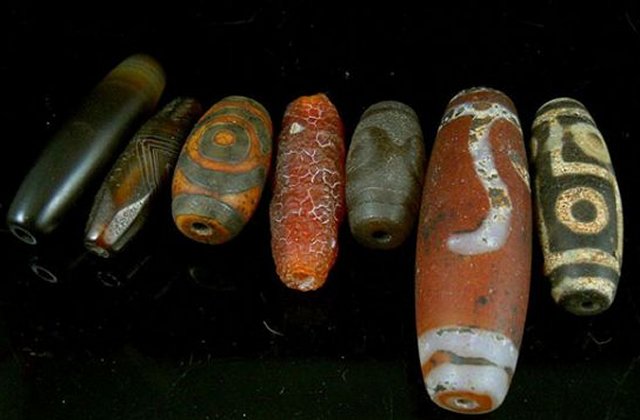
“Other dzi beads have been passed down from ancient times, but this was the first discovered by archaeologists. So it’s of great importance,” says Zhang Jianlin, vice president of the Shaanxi Archaeological Research Institute and an expert in the field of Tibetan archaeology.
The bones of the bead’s owner were too decomposed to extract DNA. But other items unearthed with it — including a comb, a bronze mirror and bracelet — indicated the owner was a woman of prominent status, who wore the dzi bead around her neck.
Studies by Chinese and foreign scholars show dzi beads are a type of artificially processed agate, but the source and processing technique are unknown.
The dzi bead excavated from the Chuvthag cemetery could help solve the mystery.
The discoveries shed light on the lives of the Zhangzhung people some 1,800 years ago: their hair was styled in numerous small plaits; they wore fur coats; they lived in cave houses; they raised yaks, sheep, goats and horses; they grew highland barley.
And when scientists at the Institute of Geology and Geophysics under the Chinese Academy of Sciences analyzed a black substance in vessels found in the tomb, they identified it as tea.
“This is the earliest tea found on the Qinghai-Tibet Plateau, and one of the oldest in China,” Tong says.
As the Ngari region lacks the raw materials, the relics are believed to have come from neighboring regions and from as far as Xinjiang, central Asia and northern India, showing extensive contacts between the Zhangzhung Kingdom and other cultures, says Tong.
Now long disappeared, the influence of this ancient civilization is still being felt on the formation and evolution of Tibetan culture.
All images via Icrosschina.
MessageToEagle.com

